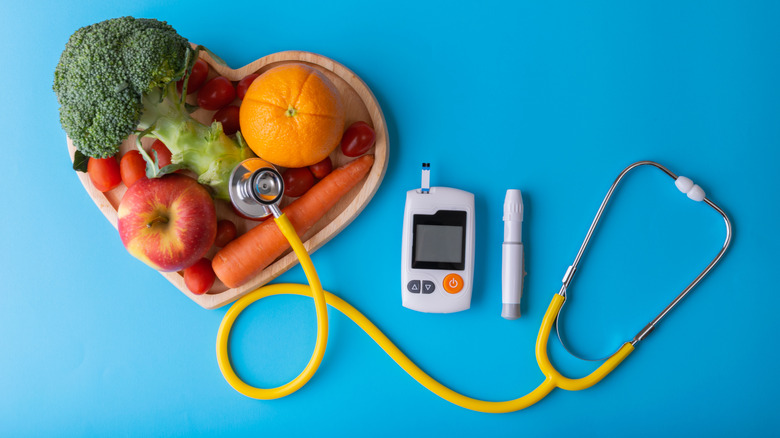Hypoglycemia Versus Hyperglycemia: What's The Difference?
Hypoglycemia and hyperglycemia are conditions that are caused by abnormal levels of glucose in the blood. Glucose is the primary source of fuel in your body, and all of your cells need it for energy. It is especially critical for your brain, muscles, and red blood cells during exercise. In fact, glucose is the only fuel your brain and red blood cells use, according to Livestrong.
Glucose, or blood sugar levels, rise and fall throughout the day, and healthy levels generally fall between 72 and 99 before meals and less than 140 after meals. For people with diabetes, a good level before a meal can range from 80 to 130 and anything below 180 after a meal is considered a good target (via Medical News Today). When levels become too high or too low, you can develop hypoglycemia or hyperglycemia. You don't have to be diabetic for these conditions to occur, but they are more problematic if you have diabetes.
Both conditions need to be monitored
Hypoglycemia occurs when your blood sugar level is lower than normal. This condition is often related to diabetes, but other conditions can cause blood sugar levels to drop. When these levels drop, it is important to raise them as quickly as possible, per Mayo Clinic. Usually this means eating or drinking something to raise levels. Symptoms include sweating, anxiety, shakiness, pale skin, and tingling in the tongue or lips. Treatment for hypoglycemia related to diabetes usually includes medication.
Hyperglycemia is when your blood sugar is too high. It, too, can affect people with diabetes. It is important for people with diabetes to check their levels to avoid more serious conditions such as eye, kidney, or cardiovascular disease. Symptoms of hyperglycemia include being thirsty, frequent urination, blurry vision, and fatigue (via Healthline). Like with hypoglycemia, diabetic patients with hyperglycemia might need medication to help control their blood sugar levels. A healthy diet and exercise can also help control blood sugar.


